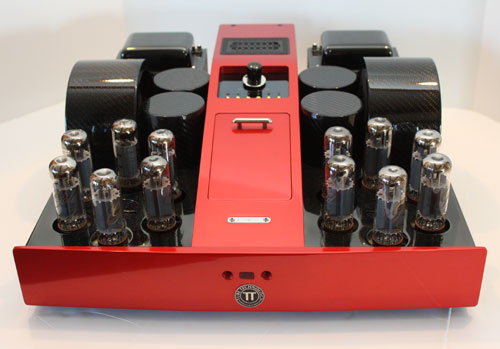Når det gjelder hovedforskjellen mellom rør og transistor, så synes jeg Jonathan Wallin i TAS hadde en god oppsummering på selve lytteopplevelsen av de to typene, og den rimer veldig godt med egen erfaring: (Det finnes selvsagt grader av alt, men i hovedtrekk er det godt oppsummert, og årsaken til at mange liker å kombinere rør og transistor mao. det beste fra begge verdener)
"Let me explain. If you were to map the anatomy of a musical note, it would divide neatly into three sequential parts or phases: the attack or transient phase, the steady-state tone phase, and the decay phase. All three are essential to creating a lifelike semblance of the real thing, but all three are more or less fudged by both the recording and playback process.What typically goes wrong, to my ear, is something that might be called “timing errors”—that is, errors in the realistic reproduction of the duration of each event (and each event has a different duration). As jitter does in digital recording and playback, timing errors in analog recording and playback tend to distort—to artificially expand or condense—the little slices of time (and the dynamic/harmonic information that is contained in them) that constitute each phase of a note’s sound.
Typically tube playback makes everything sound “longer,” like the sostenuto pedal on a piano— i.e., it expands a note’s duration, enriching its colors and textures but softening its impact. Harmonics seem to linger in the air longer with tubes; the air itself seems to be more present; instruments seem larger and more forward on the soundstage. At the same time the sharpness of instrumental attacks seems slightly dulled—too spread out over time. Consequently, instrumental outlines are more splayed out and fuzzier, bigger and less focused.
Typically solid-state playback makes these same events sound “shorter,” like the damping pedal on a piano—i.e., it condenses a note’s duration, slightly desaturating tone color and abbreviating slow-developing textures, but increasing clarity and focus in the way that the clean sharp lines of a penand- ink drawing do compared with the thicker, softer lines of a pencil sketch. Harmonics don’t seem to be as richly developed as they are with tubes; the sense of air around each note (and of air expanding and collapsing with the building up and decaying of dynamics and tone—what I call “action” or “bloom”) is lessened; instruments seem slightly smaller, more focused, and less forward on the soundstage. At the same time the sharpness of both starting and stopping transients is enhanced; consequently, instrumental outlines are sharper and more distinct, and large-scale dynamics have greater and more lifelike speed and impact.
To put this difference more positively, transistors are faster on the uptake, and better at reproducing that part of the note where speed and concision matter most—the attack or transient phase. Tubes are slower to start, and better at reproducing those parts of the note that develop more gradually over time— the steady-state tone and decay phases. Both gain strategies have trouble shifting speeds, and even at their best both only approximate the actual durations of real-life musical notes.
This is the way things stood until fairly recently. Yeah, some solid-state had begun to slow down enough to let you smell the roses; and some tubes had gained significantly in transient speed and clarity. But, as Jacob correctly notes, the fundamental virtues (and vices) of tubes and solid-state have remained more or less the same."
-p





